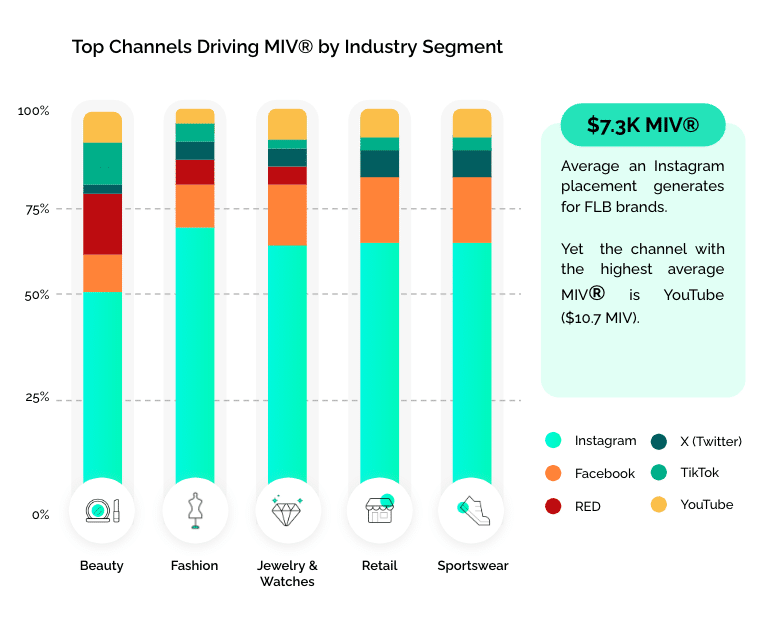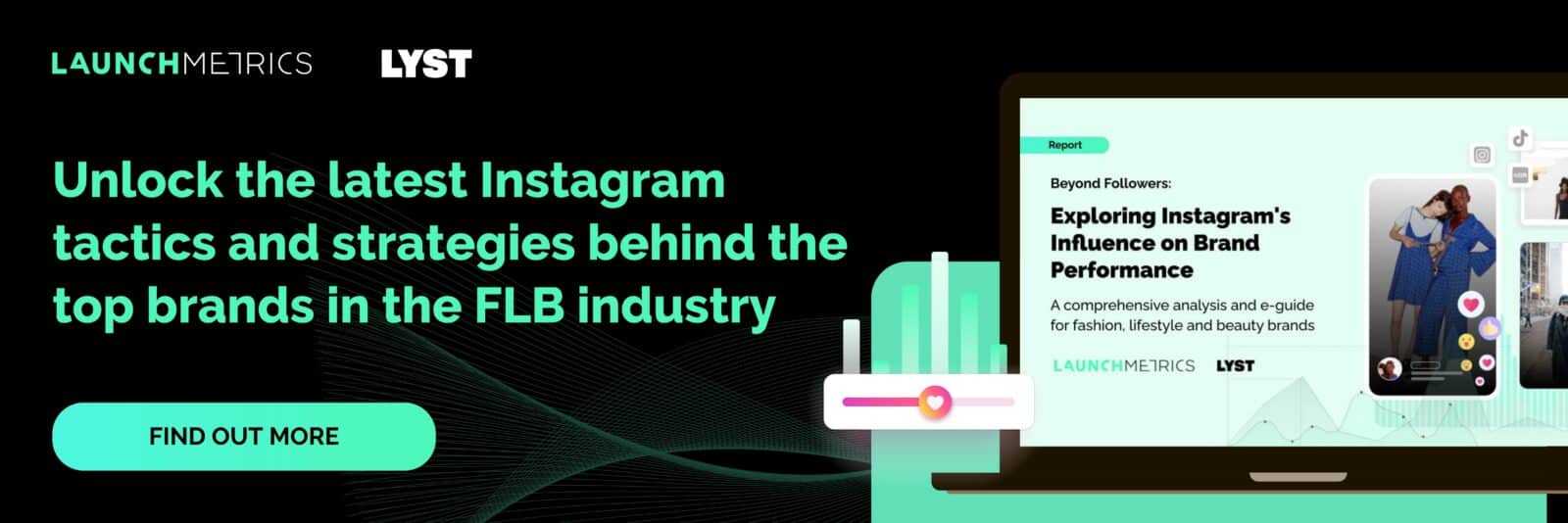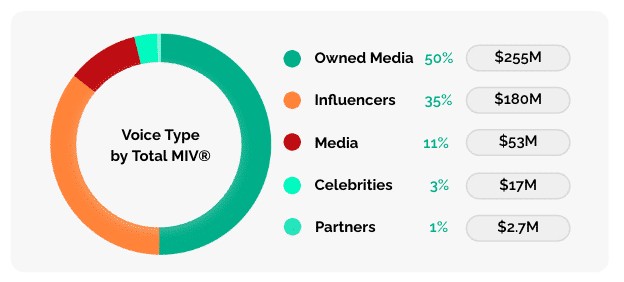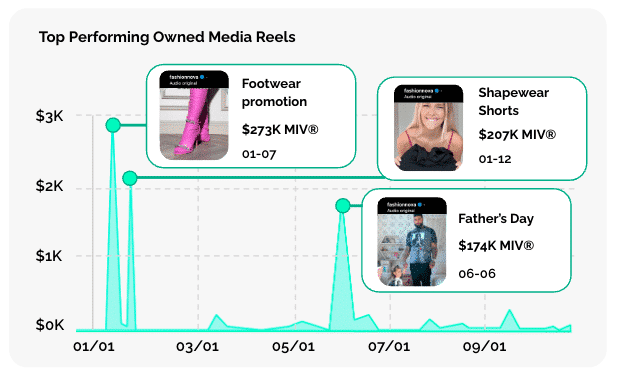The closing of a year isn't just a time for reflection. It's a goldmine of insights ripe for shaping the future trajectory of your brand.
For fashion and luxury marketers, leveraging the year’s data is pivotal for staying ahead in a competitive market. Those who don’t use the right tools and metrics to connect insights between platforms will lose out on opportunities and get left behind.
Below, we’ll look at why a data-driven marketing strategy is so crucial. Plus, how to compile your marketing reports using the best metrics.

The Power of a Data-Driven Marketing Strategy
In the fast-paced world of Fashion, Luxury, and Beauty (FLB), leveraging a data-driven marketing strategy is no longer a luxury – it's a necessity. When done right, a data-driven approach allows you to accurately measure ROI, prove the value of your activities, and win budgetary approval.
And, of course, it’s crucial for guiding your strategic direction and growing brand visibility.
In this article you’ll learn…
What Is a Data-Driven Approach to Marketing?
Essentially, a data-driven approach means your strategic decisions are based on concrete data rather than intuition or guesswork. In today’s digital world, social media metrics immediately spring to mind. But with the right tools, even offline activities can generate valuable data. (More on this below.)
What Is an Example of a Data-Driven Strategy?
An example of a data-driven strategy is the measurement and analysis of influencer partnerships to evaluate their return on investment. By tracking key campaign metrics, brands can gauge the effectiveness of these partnerships and determine which influencers resonate most with their target audience across different platforms.
With this information, brands can make informed decisions about future collaborations, ensuring they partner with the right influencers in the right way to maximize impact and ROI.
How Do You Create a Successful Data-Driven Marketing Strategy?
Now that we’ve defined data-driven marketing. Let’s look at some key pointers on how to use your marketing reports to build a killer strategy for the year ahead.
Marketing Reporting: Not all Metrics Are Created Equal
Your brand exists across multiple platforms and utilizes numerous marketing channels to connect with customers. We know this because, if it didn’t, it wouldn’t survive in today’s business landscape!
However, this reality makes tracking and measuring marketing data increasingly complex.
Why? Put simply, not all metrics are created equal. If you want to measure the ROI of a campaign in a print magazine versus an Influencer marketing campaign on TikTok, traditional metrics will have you comparing apples with oranges.
You can benchmark against your past performance on one particular platform — but you cannot benchmark effectively between mediums. For that, you require a standardized metric like MIV®, which assigns a dollar value to every media mention and marketing activity across digital media, social media, and even print media, allowing you to compare ROI like-for-like.
This uniformity is essential for accurately assessing what works and what doesn't in your marketing strategy. It gives you a complete picture of how different marketing efforts contribute to brand visibility and value.
MIV® also allows brands to benchmark their performance against competitors and industry standards. This insight is invaluable for understanding a brand’s market position and setting realistic yet ambitious marketing goals.


Understanding Regional Results
For FLB brands, recognizing regional differences in marketing outcomes is crucial, especially when dissecting end-of-year data. This data isn't just a retrospective look – it's a roadmap for 2024. Offering deep insights into how a brand's strategies resonate differently across the global market.
End-of-year data can reveal the intricate tapestry of consumer behavior across various regions as well as highlighting which strategies succeeded and which didn’t. This understanding can help you fine-tune your approach to align with each market's unique cultural, economic, and social nuances.
Data-driven tools allow you to identify high-performing and underperforming regions to reallocate resources to maximize ROI. As well as tailor your marketing strategies to ensure cultural relevance and resonance in diverse markets.
Identifying Which Ambassadors Drove Results for Your Brand

Five main Voices influence customer journeys: Celebrities, Influencers, Partners, Media, and Owned Media. One of the most crucial insights to glean from your EoY data – and to showcase in your marketing reporting – is which Voices drove the most value and who your biggest ambassadors were.
Sometimes the results will surprise you. You might uncover KOLs on RED who are delivering massive value in China, micro-influencers on Instagram with the potential to reach untapped audiences in EMEA, or Media publications that turned out to be more prominent brand advocates than you expected.
At the same time, you can identify the partnerships that didn’t deliver. All this information is instrumental in deciding which relationships to grow and which to prune back.

The Key to Unlocking Cross-Dimensional Data
The ability to slice the data by different dimensions – like Voices, regions, platforms, and channels – is crucial to understanding how your marketing activities have performed so you can determine next year’s strategic direction. However, insights can only be truly unlocked across these dimensions using a specific key: a standardized metric which, as discussed above, allows their results to be compared in a like-for-like way.
These are just a few things to consider when putting together your end-of-year marketing reporting and strategizing for the year ahead. You can learn much more in our Webinar, How To Plan Your Marketing Brand Strategy with Cross-Channel Insights. Watch now for free.

